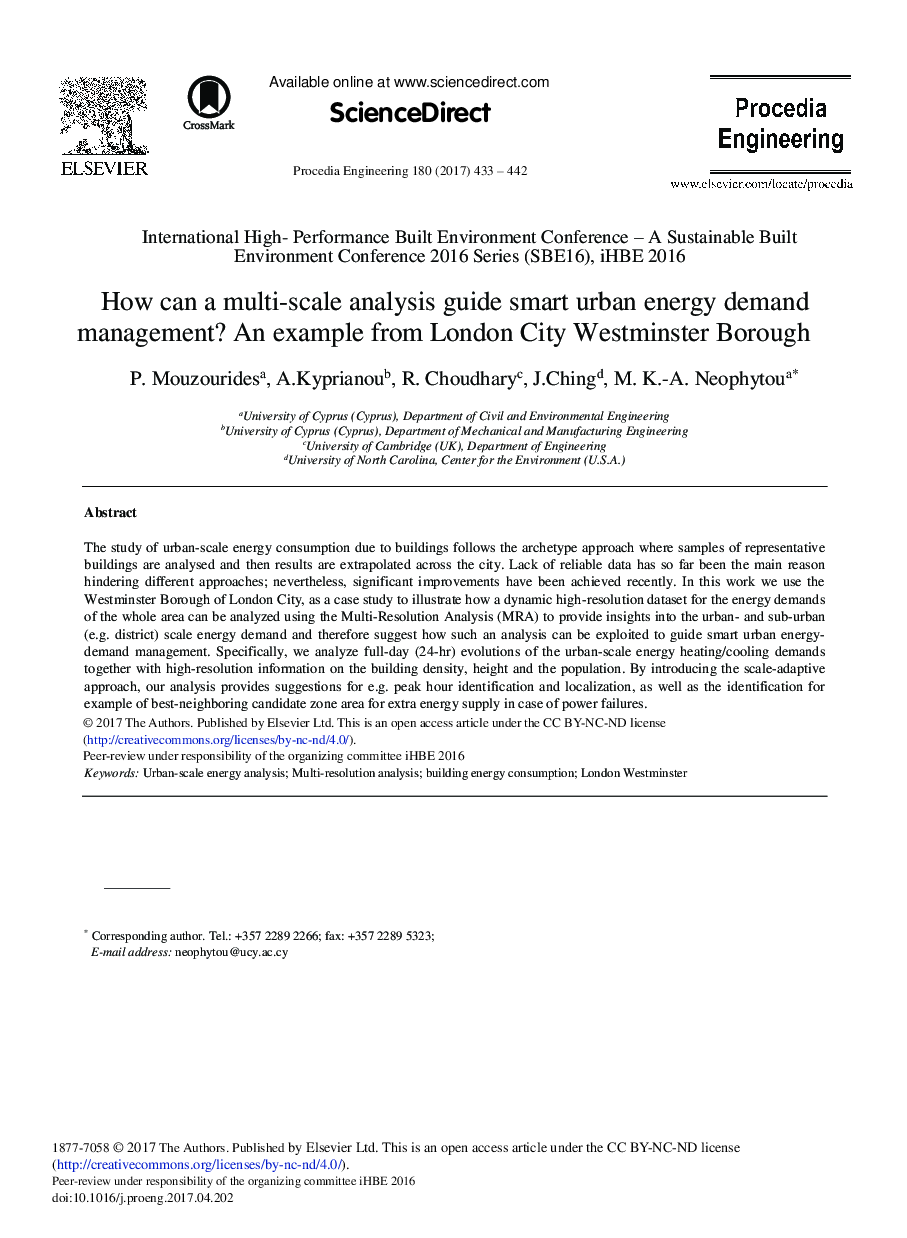| Article ID | Journal | Published Year | Pages | File Type |
|---|---|---|---|---|
| 5028947 | Procedia Engineering | 2017 | 10 Pages |
Abstract
The study of urban-scale energy consumption due to buildings follows the archetype approach where samples of representative buildings are analysed and then results are extrapolated across the city. Lack of reliable data has so far been the main reason hindering different approaches; nevertheless, significant improvements have been achieved recently. In this work we use the Westminster Borough of London City, as a case study to illustrate how a dynamic high-resolution dataset for the energy demands of the whole area can be analyzed using the Multi-Resolution Analysis (MRA) to provide insights into the urban- and sub-urban (e.g. district) scale energy demand and therefore suggest how such an analysis can be exploited to guide smart urban energy-demand management. Specifically, we analyze full-day (24-hr) evolutions of the urban-scale energy heating/cooling demands together with high-resolution information on the building density, height and the population. By introducing the scale-adaptive approach, our analysis provides suggestions for e.g. peak hour identification and localization, as well as the identification for example of best-neighboring candidate zone area for extra energy supply in case of power failures.
Related Topics
Physical Sciences and Engineering
Engineering
Engineering (General)
Authors
P. Mouzourides, A. Kyprianou, R. Choudhary, J. Ching, M.K.-A. Neophytou,
